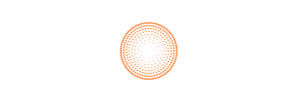Next Generation Energy Modelling Workflows
This is the start of a series of blog posts where I plan to share the development of my updated energy modelling workflow. I'm taking the opportunity while starting a new company to revisit my current workflow and incorporate emerging energy modelling technologies (and old-school programming and data science technologies) to introduce more automation and visualization to the process.
One example: quality assurance for energy modelling tends to be very manual, judgement-based, and experience-based. We need to use our judgement to think through whether it make sense that, say, fans are so high compared with everything else. Do we have unusually high air flows or operating hours? If we manually re-run and compare a test with reduced operating hours, does the fan power drop proportionally? This process is lengthy and requires multiple touch points with senior staff, re-runs, and manually gathering and summarizing results.
Making sense of model results requires engineering judgement, and always will. But what if we could develop testing tools that quickly flag common errors, or big changes, or unusual inputs or results?
These are common concepts in computer science (linters, screenshot testing), but this kind of testing remains rare in energy modelling. Modellers may be thinking of the LEED energy performance calculator's QA checks, and what I'm thinking of is something like that - but without having to manually input a great deal of information first. This would ideally help as a training tool for new modellers, and as easy automated checks and improved consistency for experienced modellers.
Other areas of exploration that I intend to develop are interactive visualization options, making it easier to make changes to models, and automating some parts of the reporting data entry process.
I'll be using EnergyPlus, along with some combination of parametric simulation tools, Rhino/Grasshopper, and OpenStudio. Any other automation will be developed in Python layered on top of that suite of tools.
There is quite a body of academic work in this area, and I'll draw on what I can of that. Similarly, I'll be leaning on the bits and pieces of computer science I've picked up (and a lot of research) to draw in some of those concepts. What I'm trying for, though, is to develop a workflow to function in a commercial environment that aligns with existing tools that I know well, that is easy to learn, consistent to implement, and flexible to grow and change as the business and industry grows and changes.
If anyone out there is working on something similar, please get in touch, I'd love to share ideas. I'll be sharing future progress here as I go.
-Alex Blue

